Usually, the adjacent ruins and the Cusco main square are the main attractions that attract all the attention of the magical Imperial City. They will even be some of the first things to visit when you take your first steps through Cusco.
Cusco, often called the Imperial City, has several main attractions, including its adjacent ruins and the main square. After exploring these sites, visitors should consider visiting the city’s diverse museums. These institutions feature Inca artifacts, miniature archaeological models, “Cusco School” paintings, and exhibitions on local cacao production, among other topics. Learning about the history of Cusco, customs, and notable figures from Cusco’s past enhances your visit.
This article, made with Machu Travel Peru, shares insights about the best museums in Cusco. These museums offer an enriching experience.
The 8 greatest museums in Cusco
- Museum of Pre-Columbian Art
- Inka museum
- Regional historical museum
- Casa Concha museum
- Museum of religious art
- Coricancha museum
- Santa Catalina Museum
- Contemporary Art Museum
1. Museum of Pre-Columbian Art
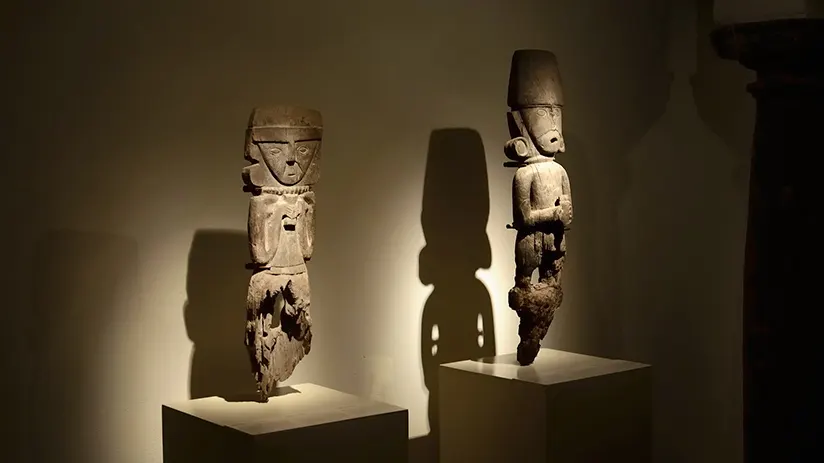
| Address | Plaza Nazarenas 231. Cusco. Two blocks behind the Cathedral |
| Schedule of visit | Monday to Sunday. From 09:00 – 22:00 |
| Prices | 7 $ per adult and 4 $ per student |
| Tour time | 2 to 3 hours |
During the Incas, the empire had three primary schools in its capital, Cusco. The first was Ajlla Wasi, which trained future virgins of the sun. The second was Yachay Wasi, and the third was Amaru Cata. Both Yachay Wasi and Amaru Cata prepared students for Inca nobility. Even many caciques and chiefs of towns conquered by the Incas sent their children to study there.
Amaru Cata was founded in 1450 AD and worked until 1550 when the Spanish conquerors decided to settle at the Santa Clara monastery there. In the middle of the 17th century, during colonial times, Luis Jerónimo Cabrera bought a mansion. He owned it until 1981. That year, a Peruvian bank named Continental purchased the property to create a future museum. In this form, the Museum of Pre-Columbian Art is located in the current Plaza Nazarenas (due to the extinct Nazarenas convent located aside from the museum). It was opened in 2003 by the BBVA Continental Foundation Bank. They worked with a branch of the Larco Museum in Lima. The museum has a large cobblestone courtyard with a decorative stone fountain. It is surrounded by four floors with two levels and stone arches. This museum is one of the best things to do in Cusco!
This great museum is one of the few in Peru that focuses on pre-Inca or pre-Columbian cultures. These are the human settlements that existed before the Incas. Inside, you will find over 450 ancient artworks and many other archaeological pieces from all parts of Peru. These items date from 1250 BC to 1532 AD. The museum offers one of the best experiences, taking visitors on a journey 3,000 years ago. The experience begins in a permanent video salon that introduces an advance of each salon’s theme. A wood salon, followed by Nazca, Mochica, Wari, Chimu, and pre-Columbian culture salons. Continue the Inca, Colonial age, gold, and Silver salons.
MAP is first on a list of the best museums in Cusco.
2. Inka museum
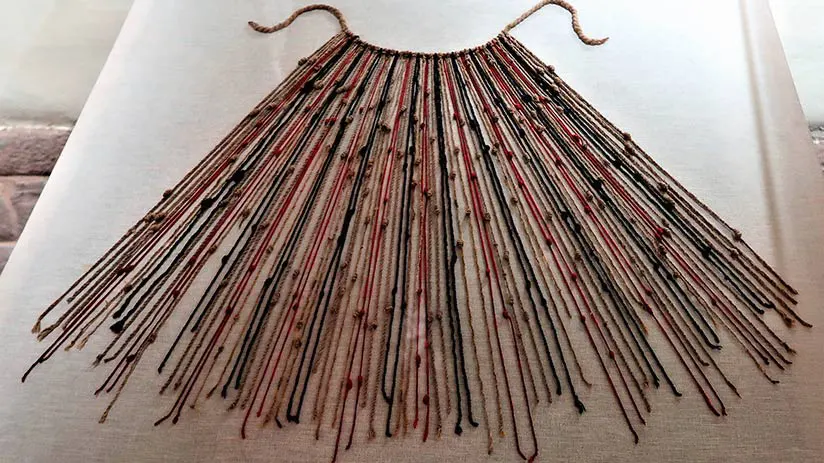
| Address | Ataud street 154. Cusco. Just 1 block behind the Cathedral |
| Schedule of visit | Monday to Friday 09:30 – 18:00 / Saturday 09:30 – 16:00 |
| Prices | 3 $ per adult and 1.50 $ per student |
| Tour time | 03 hours |
We couldn’t continue our list of museums in Cusco without mentioning the Inka Museum, just half a block from the main square. This was one of the first museums in Cusco, and if you want to know the history of the people who built attractions like Machu Picchu, Sacsayhuaman, or Moray better, you must visit this museum. The Inca Museum is owned by the UNSAAC (the National University of Cusco, with more than 300 years of existence. The fifth oldest in all of America), which is also in charge of its administration. It is located in a large Spanish colonial mansion built and inhabited by the Spanish aristocrat Francisco Alderete Maldonado, called the Admiral, in the middle of the XVII century.
The building suffered severe damage during the 1650 earthquake, and it was refurbished and later bought by Don Pedro Peralta de Los Rios. The mansion remained under his management until a new earthquake in 1950. This time, the refurbishing and subsequent purchase of the property were under the control of the UNSAAC until now.
Thanks to its strategic location, it is usually a stop on our private tours in Peru. The Inka Museum has a significant collection of pre-Hispanic ceramics, textiles, goldsmiths, jewelry, mummies, and skulls from the Inca Empire period. Get ready to know the civilization responsible for building the incomparable Machu Picchu. The museum houses some of the best collections of gold, metal, textiles, pottery, mummies, and drinking vessels. This is without mentioning other numerous archaeological finds in the Cusco area.
Be sure to appreciate the ornate ceilings and see the local weavers in the courtyard. This museum can be a bit more expensive than some other museums in Cusco, but the admission price is worth every penny due to its high quality. You can also hire a Cusco travel guide to accompany you and learn a little more about the history of the pieces.
3. Regional Historical museum
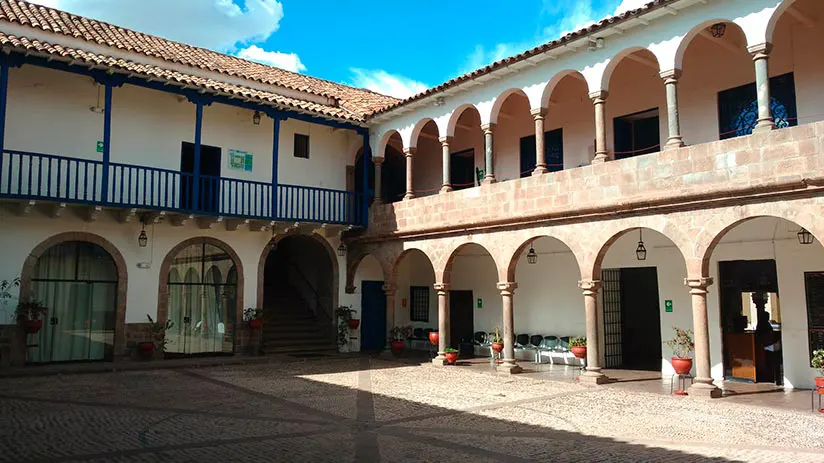
| Address | Corner of Garcilaso Street and Heladeros Street |
| Schedule of visit | Monday to Sunday from 08:00 – 17:00 |
| Prices | Ticket included in the General Cusco Tourist Ticket (36 $) |
| Tour time | 03 hours |
The Regional Historical Museum of Cusco is situated in the former home of the renowned colonial poet Inca Garcilaso de la Vega Chimpu Ocllo, an influential Inca-Spanish historian known for his book “The Royal Comments of the Incas.” He was born to a Spanish aristocrat and an Inca princess, making him a significant figure in both cultures.
The mansion, built on an old Inca square called “Cusipata,” meaning “Place of Rejoicing,” was established on a Ceque, a system that organized sacred sites around Cusco. The Spanish conqueror Pedro de Oñate built the property in 1534. Later, it became the home of Garcilaso de la Vega. He lived there until he moved to Europe in 1560. The building features an Andalusian style, complete with a large cobbled patio and decorative stone fountain, surrounded by stone arches across four floors
Among the many museums in Cusco, this one offers a different view of the area’s history, architecture, and politics. It is an incredible alternative to enjoy before undertaking any Machu Picchu tours.
The Regional Historical Museum of Cusco boasts an impressive and eclectic collection of “Cusco School” paintings by critical artists such as Diego Quispe Tito, Pablo Chillitupa, and Bernardo Bitti. The museum also features a chronological display of archaeological objects from pre-Inca and Inca cultures, including Nazca mummies, Inca textiles, pre-Inca ceramics, and ancient artifacts. Visitors can see Andean musical instruments, Inca pottery, gold ornaments, and utensils. They can also view personal items of Inca Garcilaso de la Vega, like pens, papers, and furniture. Additionally, the museum hosts exhibitions showcasing photographs of Cusco following the significant earthquakes of 1650 and 1950.
Entrance to this museum is free if you have a Cusco Tourist Ticket. With our Cusco travel tips, we recommend purchasing the ticket since it will allow you to enter many city attractions.
4. Casa Concha museum
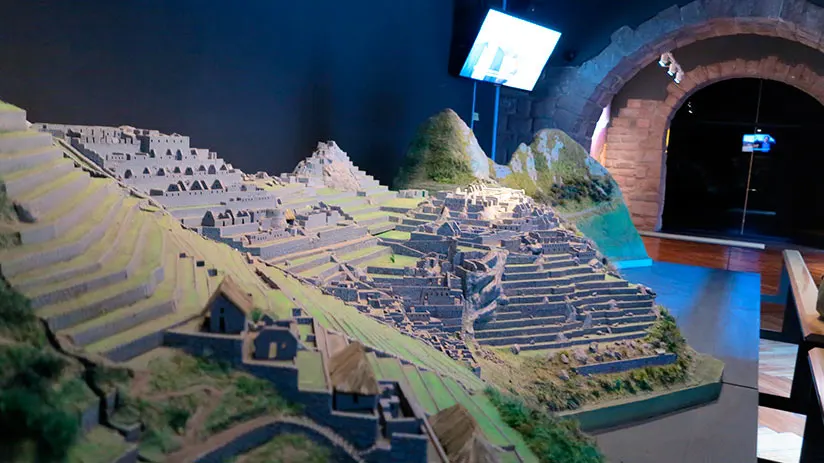
| Address | Santa Catalina Ancha 320 Street. Half a block from the main square |
| Schedule of visit | Monday – Saturday. From 09:00 – 17:00 pm |
| Prices | $ 6 per Adult and $ 3 per Student |
| Tour time | 02 hours |
It could be considered one of the most recent museums in Cusco. Also known as the Machu Picchu museum, Casa Concha is one of the most complete museums in Cusco. It was the old home of José de Santiago Concha. He was an important Spanish nobleman from the time of the conquest. His descendant, Pio Concha Martin, was the last Spanish governor in the Colonial Cusco in the middle of XIX. This incredible site stands out for its picturesque balconies. Today, this museum is managed by and belongs to the San Antonio Abad University of Cusco.
If Machu Picchu is your next destination, visiting this museum can deepen your knowledge about the citadel. The museum shows almost 400 archaeological pieces. Hiram Bingham made important discoveries after a long struggle with Yale University. The story is straightforward: Bingham revealed Machu Picchu to the world in 1911. Nine years earlier, a farmer named Agustin Lizarraga had found the Inca citadel. However, he lacked the resources to share his discovery with the world.
The artifacts found at Machu Picchu were sent directly to the United States, specifically to Yale University. This institution funded Bingham’s expedition to the jungles of southern Peru, among other places. Supposedly, they had to conduct different investigations on the pieces and then return them to the Peruvian State. However, the pieces took time to be returned, starting a trial in which the Peruvian state won after many years. Some pieces were not even returned, remaining forever in the American university. However, the majority were returned and were exposed to the Casa Concha.
You will also find some metallic, lithic, ceramic, and bone remains displayed in display cabinets and pedestals. Some Inca artifacts found during the digs at Casa Concha are also on display in the museum. You can walk to the museum from Cusco cathedral, another important attraction. Before or after visiting the Inca citadel, you should stop by this museum. It is important to learn about the lifestyle of the ancient Incas.
5. Museum of Religious Art
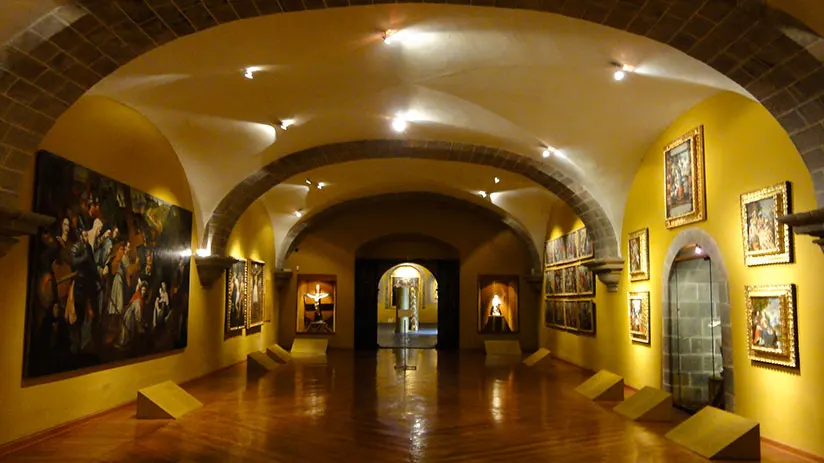
| Address | Herrajes 38 Street, corner with Hatunrumioc Street |
| Schedule of visit | Monday – Saturday. From 08:00 – 18:00 |
| Prices | Ticket included in the General Cusco Tourist Ticket (36 $) |
| Tour time | 01 hour |
Among the different museums in Cusco, this was built on what was once the palace of Inca Roca from the fourteenth century; even part of its outer wall boasts the unique 12-angle stone. After the Inca regent and his descendants and after the Spanish invasion, the building passed to the Spanish hand, being inhabited by numerous influent Iberian, mestizo families, and renowned landowners until the middle of the XX century, when the Archbishop of Cuzco Felipe Hermoza y Sarmiento bought the building to use it as Archbishop’s Palace. In 1966, another local Archbishop, Ricardo Durand Flores, donated part of the infrastructure to create a religious art museum, where local art pieces made in colonial times would be exhibited with spiritual themes. Between them are paintings of the famous “Cusco school” art style.
Various Cusco archbishops and a recognized art collector, deputy, and politician from Cusco, José Orihuela Yábar, have donated sculptures and paintings over the years.
In this form, the museum has a perimeter wall made of stone, which is well known because it is where the “Stone of the 12 angles” is found. It also has a beautiful, extensive Renaissance patio with ceiling tiles and stone arches. In the middle of the courtyard is a stately pool.
Inside, you will see an incredible collection of colonial religious paintings like the collection of 12 canvas prints of Corpus Christi (an essential religious procession developed in the main square of Cusco every second Thursday of June, when Saint sculptures are taken in procession around the Cusco Plaza) brought from Santa Ana church or the collection of 9 canvas prints of Zodiac series made by local painter Diego Quispe Ttito. You can also admire its beautiful carved cedar ceilings, impressive stained-glass windows, and Moorish-style doors. It is pretty easy to locate within the Cusco tourist map. You can visit this museum to find the Stone of the 12 Angles.
6. Coricancha museum
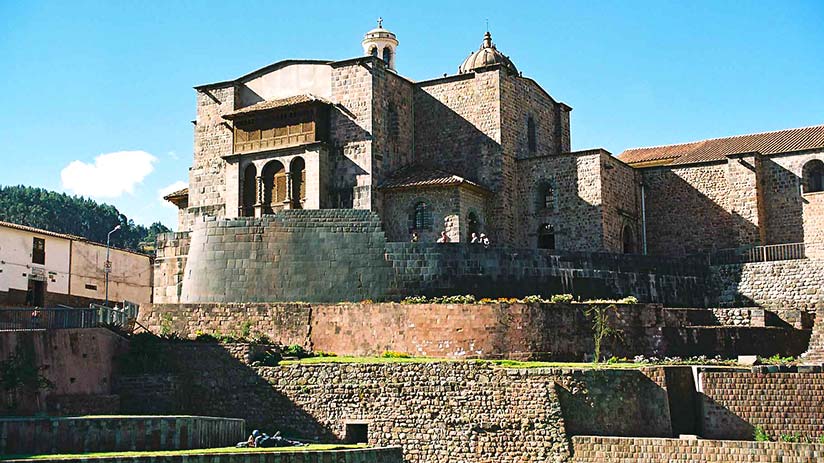
| Address | El Sol Avenue, 3º Block. Just in front of Coricancha temple |
| Schedule of visit | Monday -Saturday 09:00 – 17:00 / Sunday 14:00 – 16:00 |
| Prices | Ticket included in the General Cusco Tourist Ticket (36 $) |
| Tour time | 45 min |
Cusco was the most important and sacred city of Tawantinsuyo. This was the large territory of the Incas. It covered lands that are now Colombia, Ecuador, Chile, Argentina, Bolivia, and Peru. Within Cusco, the Coricancha was the most sacred place. In other words, it is the center of everything. This temple was magnificent and was destined for the worship of the Sun God, its most important deity. The first Spanish chronicles say that the Coricancha walls were covered in gold and silver sheets. They also had gold sculptures of miniature llamas and Andean animals in the temple garden.
When the Spanish conquerors arrived in Cusco, they were amazed by the temple. They started to take it apart and took the gold and silver for themselves. At the same time, they built the Santo Domingo Convent on the ruins of this great temple. This was a way to quickly impose the new Catholic religion over the old pagan one.
The current Convent of Santo Domingo has one of the most complete underground archaeological museums in Cusco city. The Coricancha Site Museum sits just below what was once the temple’s beautiful Sacred Garden. You can see mummies, sacred idols, textiles, and many other things inside.
The museum has many exhibits about the Inca and pre-Inca cultures. Its collection includes ceramics, fragments, textiles, paintings, sculptures, and musical instruments. The site also has many replicas of objects found in excavations.
You will also see an exhibition of the civilizations that lived in Cusco presented chronologically. You can enter the museum from the “Avenida Sol” avenue. This is an underground museum with about five rooms. Here, someone explains the history of our ancestors.
7. Santa Catalina museum
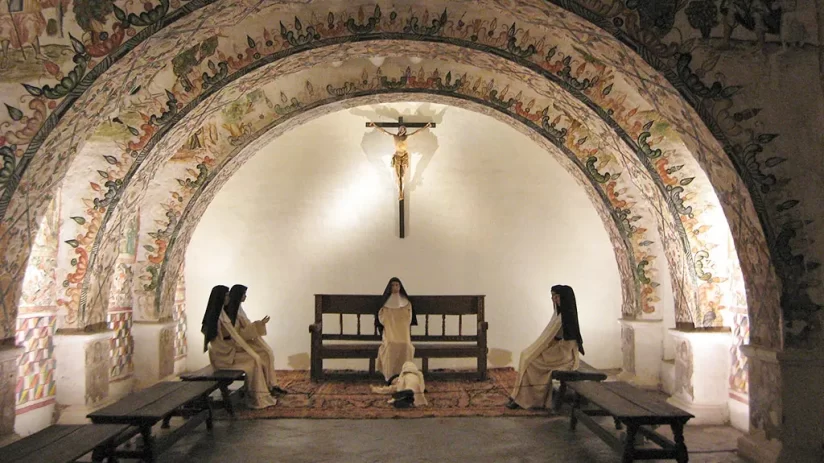
| Address | Santa Catalina Ancha Street 401, Historic Center of Cusco |
| Schedule of visit | Monday – Saturday 08:30 – 17:30 |
| Prices | $ 3 per Adult and $ 1.5 per Student |
| Tour time | 01 hour |
This peaceful monastery museum is located in Plaza Santa Catalina, just a short walk from the Plaza de Armas in Cusco. The Museo de Arte stands where the Acllahuasi once stood. It was also known as the “House of the Chosen” or “Casa de las Elegidas.”
This ancient Inca site recruited some of the most beautiful and virgin women in the entire Empire. They had to dedicate themselves to the cult of the Sun or the service of the Inca nobility. Some women focused on cooking and making clothes for the Inca army. They also created farming tools and became strong warriors for the Empire when needed.
The founders established the Santa Catalina Monastery in 1601 in Arequipa. However, because of several natural disasters in the city, it was moved to Cusco in the early 1600s. The initiative for the foundation came from the widow Lucía Rivera de Padilla. The widow had extensive wealth and fortune, and in February 1605, the first 25 professed nuns arrived in Cusco, situated inside the old churches in Cusco list. The museum features stunning colonial architecture, showcasing the final stages of the Renaissance with Roman-style arches.
The Convent is now open to the public. Visitors can explore many areas, including the mortuary, workroom, refectory, study, church, sleeping quarters, and chapter house. These areas show the lives of nuns from colonial times to today. The museum displays paintings from the 17th and 18th centuries. These are from the Cusco School. They include works by the well-known Peruvian artist Diego Quispe Ttito. It also has impressive colonial tapestries and paintings.
8. Contemporary Art museum
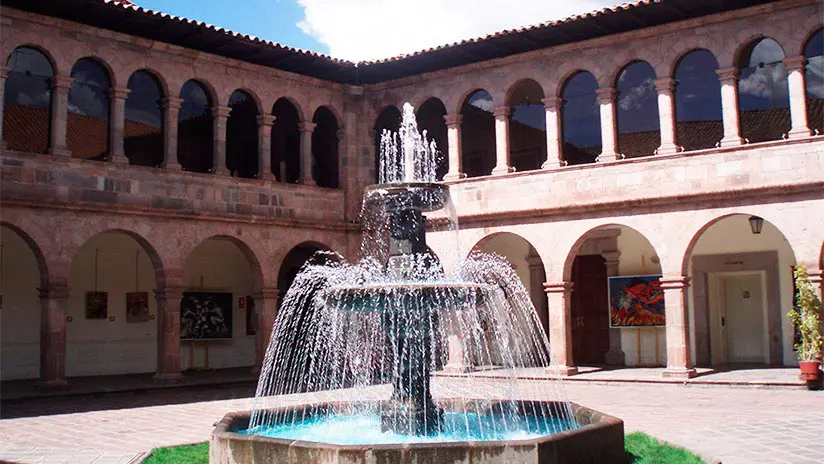
| Address | Municipal Palace, Espinar 270 Street. Historic Center of Cusco |
| Schedule of visit | Monday – Saturday 09:00 – 18:30 |
| Prices | Ticket included in the General Cusco Tourist Ticket (36 $) |
| Tour time | 30 minutes |
This is one of the museums in Cusco that you need to visit. It is in Plaza del Regocijo, the square adjacent to the Plaza de Armas. This museum was founded in 1995 by the Cusco major of that year, Dr. Daniel Estrada Perez, with the donation of 280 artworks by local artists belonging to the local art collector Dr. Luis Rivera Dávalos. Today, it has more than 300 works of art by renowned local artists such as Antonio Olave and Hilario Mendivil, as well as many international artists’ artworks. This museum has three rooms inside the Municipal Palace.
You can enjoy the collection permanently, as more than 50 temporary exhibitions are held annually in these three salons. Both collectively and individually. Whether they are from recognized national or foreign artists, there is a wide variety of options. The art in the Imperial City returns to our Inca and colonial ancestors and our own. The art of Cusco is revived and remembered through its contemporary artists, who strive to produce and reproduce a great variety of styles.
“A VISIT TO A MUSEUM IS A SEARCH FOR BEAUTY, TRUTH, AND MEANING IN OUR LIVES. GO TO MUSEUMS AS OFTEN AS YOU CAN”
We hope, together with Machu Travel Peru, we have shown you some of the best museums in Cusco, although these are not all you can find inside the Imperial City. It is worth visiting other places or taking a walking tour in Cusco to map them out. And, if you are wondering about the city’s safety, let me inform you that Cusco is a safe place to travel. The municipality puts security cameras, police and even patrol cars in every corner of the historic center for your safety.
In the same way, if you want to visit some of these places, you can consult Machu Travel Peru to organize a quick guided tour of the place. Our team of qualified consultants will be delighted to organize the trip of your dreams. We can include a visit to some of these incredible museums in Cusco in your itinerary. Do not miss it, and start organizing with us from now on!
